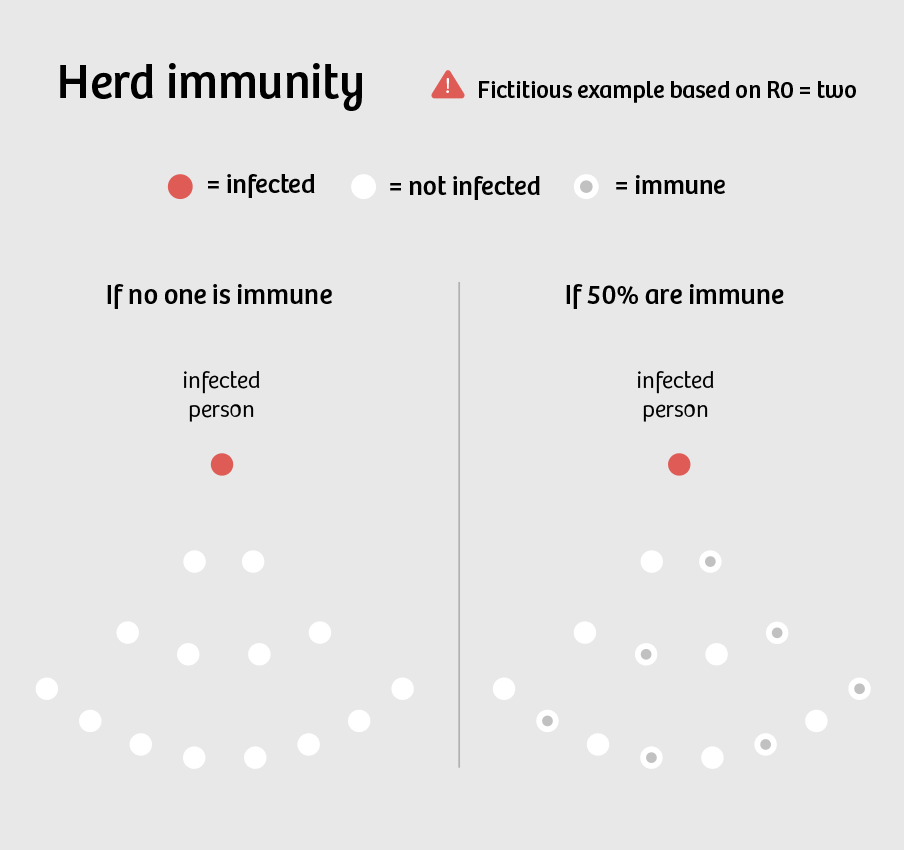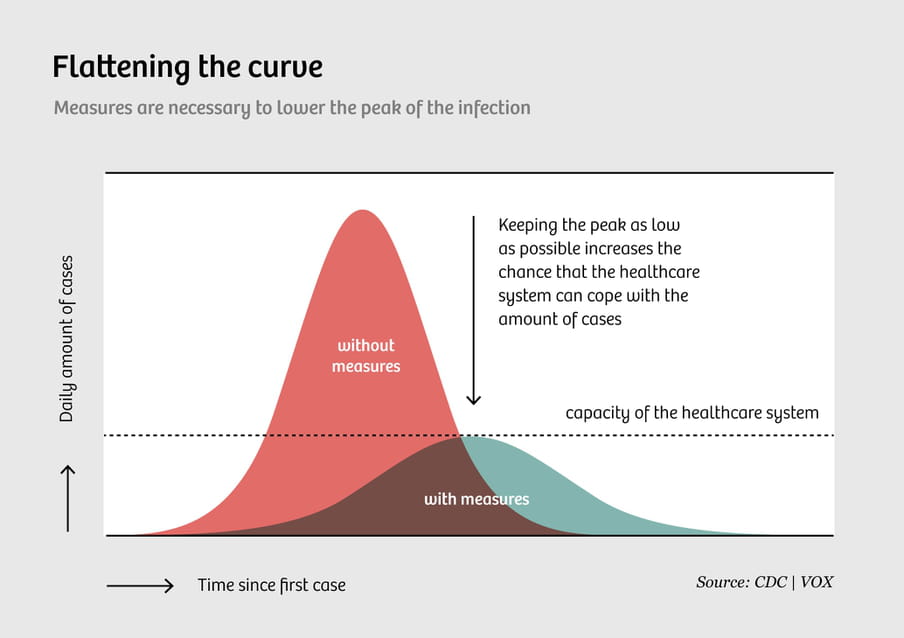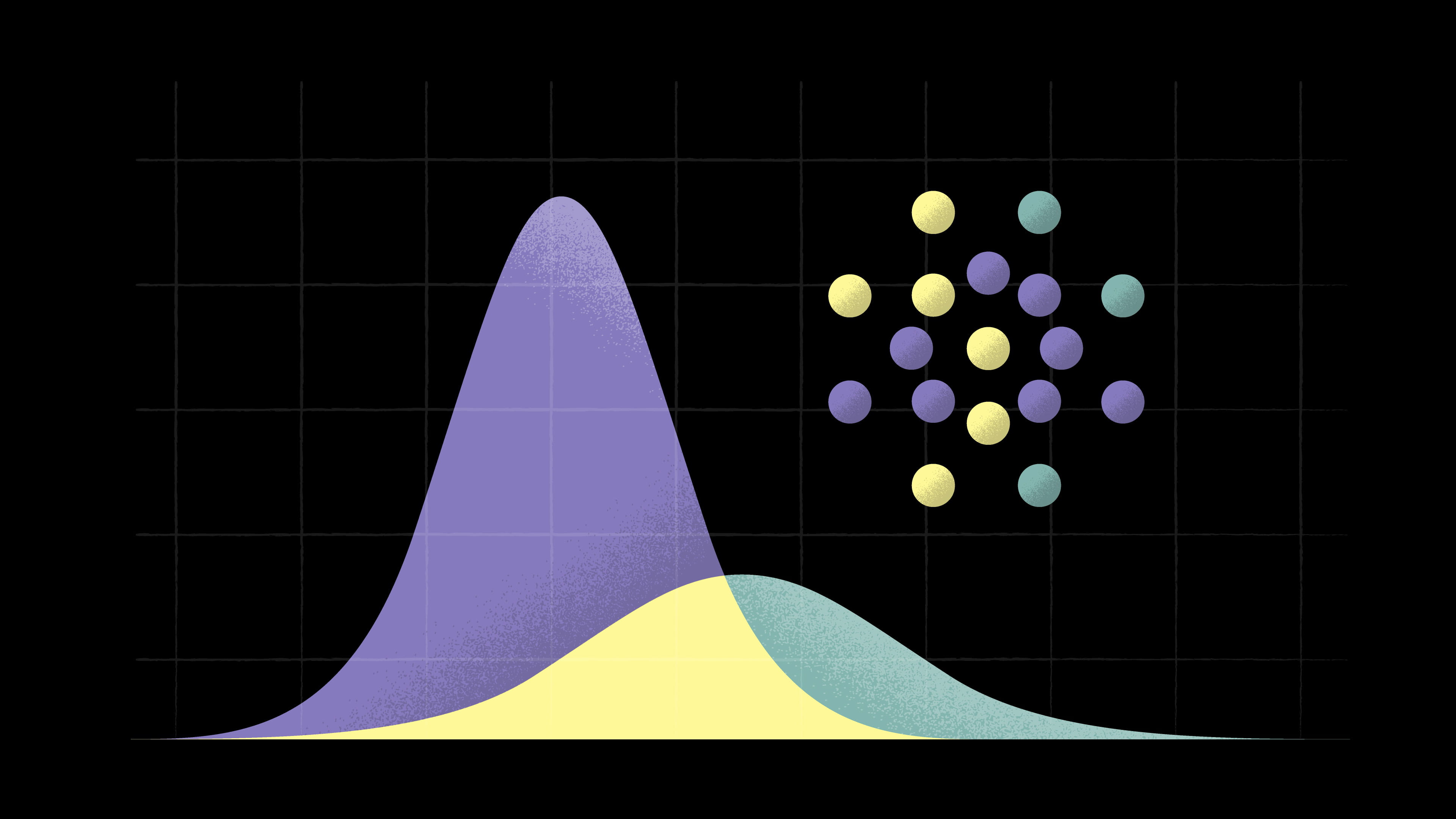You’ve probably heard a lot about "herd immunity" lately. The chief scientific adviser to the British government mentioned it in an interview with the BBC. And Mark Rutte, the prime minister of the Netherlands, gave a speech about the impact of the coronavirus on the country, stating that experts are telling him that "we can delay the spread of the virus and at the same time build up population immunity in a controlled manner".
Herd immunity is based on a simple principle: once you’ve had a disease, you become immune to it.
For the record, none of these officials have decided to let everyone out to get the virus. In the Netherlands, herd immunity is at best another means to the important goals of protecting vulnerable people and making sure the healthcare system can carry the load.
And that’s a good thing because there is still much unknown about immunity to the coronavirus. Becoming resistant to a virus is common, but we are not yet sure whether and for how long one can become immune in the case of Covid-19.
In any case, herd immunity is currently an important term in discussions about the virus. But what is it? What do we know about herd immunity to Covid-19 – and what don’t we know yet?
What is herd immunity?
In a nutshell, the more people are immune to a virus, the smaller the chance that it will spread.
To express this in more tangible terms, you need to know what the basic reproduction number is. In epidemiology, this number is called R0, pronounced R nought or R zero: the average number of people who are infected by one sick person. R0 is based on a population that is encountering a disease for the first time, in which people are not yet immune to the disease, for example, because of inoculation with a vaccine.
When it comes to the coronavirus, this number is unclear. All sorts of estimates have been ventured using various methods that put the R0 roughly between two and three. The World Health Organization (WHO) is a bit more conservative, calculating an R0 between 1.4 and 2.5.
Let’s assume that the R0 is two. Without herd immunity, a sick person will pass the virus to two other people on average. So each of those people will pass it on to two other people, and so on.
To know how quickly a disease spreads, you also need to know the serial interval – the time between two consecutive cases. For convenience, I’ll assume that there’s just one day between getting infected yourself and passing it to the next person. Do note that this number is completely made up, just for the purposes of this example, and does NOT apply to Covid-19.
With an R0 of two and a serial interval of one day, you see the following happening:
- Day 1: 1 new patient
- Day 2: 2 new patients
- Day 3: 4 new patients
- Day 4: 8 new patients
- Day 5: 16 new patients
- …
This is an example of exponential growth – the number of cases doesn’t increase in linear progression, but accelerates faster and faster.
Now suppose half the population is immune because of a vaccine. This means that a sick person can no longer pass on the virus to an average of two people, but only to one, who can then also pass it on to one person. The effective reproduction number – R, which represents the actual infection – has now reached one because steps were taken to control the disease. (This is different from the R0, which assumes no intervention.)
The scenario now looks like this:
- Day 1: 1 new patient
- Day 2: 1 new patient
- Day 3: 1 new patient
- Day 4: 1 new patient
- Day 5: 1 new patient
- ...
Growth is no longer exponential.

Let’s face it: the reality of the situation is obviously far more complex than this super-simplified example. For instance, R0 is only an average; the chances of becoming infected vary from person to person.
Researcher Antoine Allard explained to Stat, a news website that focuses on health: "Bodies may react differently to an infection, which in turn can facilitate or inhibit the transmission of the pathogen to others." In the case of Sars, for example, the chances of becoming infected varied between individuals.
A model like this also assumes that the population is randomly mixed, so everyone has an equal chance of encountering another person. In practice, however, you often see people forming clusters.
To design mathematical models that are more realistic, epidemiologists are therefore abandoning the assumption that everyone has the same chance of getting sick. But the principle is still the same: if more people are immune, the disease will spread less easily.
Herd immunity is important to protect vulnerable people in society – the elderly, for example, or people who are already sick. They are indirectly protected from catching the virus because the people around them are immune, so they won’t pass the virus on to them. In other words, we’ve built a "protective wall".
This video explains the concept of herd immunity:

Are we going to achieve herd immunity with a vaccine?
One way or another, the hope is that we will develop herd immunity to Covid-19. There are two ways to achieve that. The first is to develop a vaccine. Then the government authorities will make sure that we achieve sufficient vaccination coverage. The higher the R0 is, the more people need to be vaccinated – and then we’re good to go.
But there is no vaccine for the coronavirus yet. And it’s likely to take at least a year before a vaccine is available, as the New Yorker explains: "A Covid-19 vaccine developed, licensed, and manufactured at a global scale in twelve months would be an unprecedented, even revolutionary achievement."
If we pin all our hopes on a vaccine, then countries should go into complete lockdown. In the UK, that’s not the case and schools remain open. Dutch prime minister Mark Rutte also expects that’s not going to happen in the Netherlands because it would have far-reaching consequences and, in any case, the virus might return once measures are lifted.
"In this scenario, we would essentially have to shut the country down for a year or even longer, with all the consequences that would entail. And even if that were possible in practice – making people stay in their homes unless they have permission to go outside, for such a lengthy period – the virus could simply rear its head again once the measures were lifted."
Are we going to achieve ‘natural herd immunity’?
Then there’s the second way to achieve herd immunity: "natural herd immunity". That means that people become immune by catching the disease themselves. Like vaccines, this scenario is uncertain. For two reasons:
(1) We still don’t know how long you’ll stay immune
First, it isn’t clear yet how long you will stay immune after having been infected with Covid-19. The duration of immunity differs for each disease. As science journalist Ed Yong wrote in the Atlantic: "When people are infected with OC43 and HKU1 – two other coronaviruses that regularly circulate among humans and cause common colds – they stay immune for less than a year. By contrast, immunity against the first Sars virus (from 2003) holds for much longer."
There are stories of people testing positive again after an infection, but it is still unclear whether these cases were in fact re-infected, or if the virus was still present in their bodies. A study of four Chinese patients – all of them medical professionals – found that they still tested positive between five and 13 days after the symptoms had disappeared. "These findings suggest that at least a proportion of the cured patients may still be carrying the virus."
Another study suggested that monkeys could not be reinfected by the virus. That is promising. But the jury’s still out when it comes to immunity. "I would be surprised, but not totally surprised, if people did not become immune," said Myron Levine, an infectious disease expert at the University of Maryland, to MIT Technology Review.
However, like all Covid-19 research right now, none of these conclusions are definitive, and many of the studies have not even been peer-reviewed yet. Logical, of course, in this situation. So it’s far too early to know anything for sure.
(2) Getting sick has consequences
Second, getting the actual disease is not the same as being vaccinated. In a study of 44,415 Chinese patients, 81% of cases only exhibited mild symptoms – everything from sniffles to mild pneumonia. But the other patients suffered from symptoms that were more severe, sometimes even life-threatening.
Again: the data contains uncertainties and comes from a specific context, so take this with a grain of salt. The fatality rate is also still unclear. But even if it is low – Chinese data worked out to 2% – that still means that many people will die if the entire population is affected.
And no matter how high it is, the fatality rate is only an average. Chinese data also shows that elderly people run a much higher risk of dying from the virus.
So what does that mean for the measures that have been taken?
This bears repeating: officials speaking about herd immunity does not mean that they’re propagating an uncontrolled spread of the disease. That would be ridiculous and against any advice the World Health Organization is circulating at the moment.
Current measures – such as social distancing, washing hands, working remotely – all aim to protect the most vulnerable among us and make sure the healthcare system can carry the burden. The importance of which is aptly shown in this now-famous graph:

Hopefully, such measures will buy us extra time – time to develop a vaccine, time to prevent the healthcare system from overloading, time to see how countries like China are recovering.
And time for us to hopefully learn more about herd immunity to the coronavirus.
Translated from the Dutch by Joy Phillips.
Dig deeper
 Deciphering the pandemic: a guide to understanding the coronavirus numbers
You’ve already read countless articles on coronavirus infection numbers. But what do those numbers really mean, and how should you read them?
Deciphering the pandemic: a guide to understanding the coronavirus numbers
You’ve already read countless articles on coronavirus infection numbers. But what do those numbers really mean, and how should you read them?


